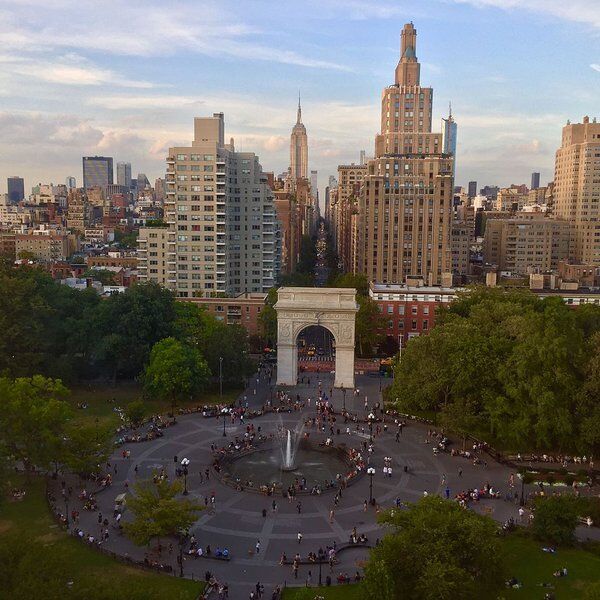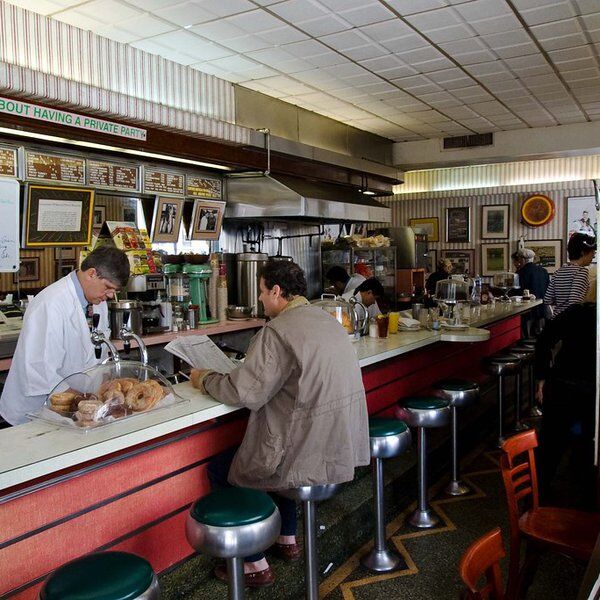
Discover Surrogate’s Court in NYC
New York contains countless historic landmarks, but Surrogate’s Court stands out both for its striking Beaux-Arts design and important role in the legal system. Situated in a prime location within the city's Civic Center, the majestic building overlooks City Hall Park and neighbors the iconic Tweed Courthouse and Manhattan Municipal Building. Since its opening in the early 20th century, Surrogate’s Court has been a cornerstone of New York’s legal history, handling matters related to probate, estates, and adoption.
The courthouse’s interior has been lauded by architectural critic Paul Goldberger as one of the city’s finest examples of Beaux-Arts architecture. This recognition is further cemented by its designation as a New York City landmark in 1966 and a National Historic Landmark in 1977.
The court's role in the legal landscape of the city, combined with its grand architecture and prime location, makes it a fascinating place to visit or study. Keep an eye on special events or exhibitions that may offer rare public access to areas of the building typically off-limits to visitors.

The Role of Surrogate’s Court in NYC’s Legal System
While the Surrogate's Court is a beautiful historical building, it also has an essential function within New York's legal system. It handles cases related to the affairs of decedents, such as the probate of wills and the administration of estates. For those who pass away without leaving a will, the Surrogate’s Court is where the estate is processed according to New York’s laws of intestacy.
In addition to probate matters, the Surrogate’s Court also oversees adoption proceedings, making it a key institution for family matters. The court’s jurisdiction extends across all 62 counties in New York State, with each county having its own Surrogate’s Court.
In New York City, the Surrogate’s Court in Manhattan is one of the busiest, handling numerous cases related to wills, estates, and adoptions each year.

The History of Surrogate’s Court
The Hall of Records
The history of the Surrogate's Court can be linked to the earlier establishment of the Hall of Records, which was designed to house and protect New York City's essential public records. The first Hall of Records, constructed in 1831, was located northeast of City Hall in what is now City Hall Park.
Built on the site of the old "New Gaol," the city’s late-18th-century jail, this building was described as a striking example of Greco-Roman architecture. It was expanded in 1870, but by the late 19th century, the structure had deteriorated significantly. With the building's physical condition worsening, city officials and legal professionals advocated for a more secure and modern facility to house records, some of which concerned properties worth billions of dollars.
The Need for a New Hall of Records
As the old Hall of Records became overcrowded and unsafe, campaigns for a new facility gained momentum. By the late 1890s, the city's records—concerning both legal documents and public property files—were at risk of being lost. In 1896, the New York City Bar Association formally proposed the construction of a new Hall of Records, citing safety concerns.
The original structure's fireproof claims were deceptive, as it still contained wooden floors and beams, which were vulnerable to destruction. In 1903, the city demolished the original Hall of Records, and plans were set in motion to build a new, grander facility.

Building Surrogate’s Court: Challenges and Controversy
The design of the new Hall of Records was entrusted to architect John Rochester Thomas, an accomplished designer known for his work on the New York Stock Exchange and several striking churches. Thomas’s design for the new building, which would later be known as the Surrogate’s Court, was intended to reflect the prestige of New York's growing legal and financial sectors.
Construction began in 1899, but the project was delayed. Initially, the project faced resistance from some city leaders who felt the cost of the building’s interior furnishings was excessive. Under Mayor Robert Anderson Van Wyck, a number of changes were made to reduce costs.
However, these alterations sparked controversy with some critics arguing that the changes would compromise the building’s architectural standard. Following the sudden death of Thomas in 1901, his designs were altered further, and the firm of Horgan and Slattery took over the completion of the building.
Despite these hurdles, the building's foundations were laid, and the project moved forward with support from political and business figures who understood the importance of a secure and dignified venue for the city's public records. As its use shifted over time, it became predominantly the home of the Surrogate’s Court, which led to its official renaming in 1962.

Surrogate’s Court: A Historic Beaux-Arts Building
Exterior Details
Surrogate’s Courthouse is built on a full city block in Manhattan's Civic Center. The seven-story granite building is divided into multiple sections. There is a rusticated base, a midsection with prominent windows, and a mansard roof topped by dormer windows. The central portion of the southern elevation, facing Chambers Street, is defined by three double-height arched doorways, flanked by 32 colossal granite columns. This entrance was originally lined with Siena marble, adding to the visual opulence.
Then there are the sculptural details. Fifty-four statues, representing prominent figures in New York’s history, including Peter Stuyvesant, Philip Hone, and DeWitt Clinton, are carved into the exterior. These sculptures, created by artists Philip Martiny and Henry Kirke Bush-Brown, add to the stately nature of the building.
Interior Design and Layout
Inside, the grand lobby, which features a staircase inspired by the Paris Opera House, leads to a vast atrium illuminated by a magnificent skylight. The interior is lined with marble, including the richly decorated rotunda. The building's layout was designed to accommodate both municipal functions and public courtrooms, and the Surrogate’s Court continues to occupy the top floor, with other municipal services housed throughout the structure.
The building’s basement holds the New York City Municipal Archives, which houses over 200,000 cubic feet of records, including historical documents dating back to the early Dutch colonial period. The courthouse’s structure was built with a fireproof frame to safeguard these vital paper records, a forward-thinking design choice that ensures its continued durability. Some of these materials are open to the public today.

The Impact of Surrogate’s Courthouse
“One of the most beautiful pieces of architecture in the country."
Once complete, the new Hall of Records quickly garnered praise from critics, with The Brooklyn Daily Eagle declaring the building’s interior a "positive revelation" unlike anything else in the United States. Montgomery Schuyler, an influential figure in architectural circles, highlighted how the Hall of Records also captured the elegance of Parisian monuments.
Beyond its design, the courthouse found itself on screen in numerous television and film productions, including Law & Order and Gotham. These inclusions cemented the building’s importance in the public perception of NYC’s landscape.

Visiting Surrogate’s Court in New York City
Surrogate’s Court operates within a regular schedule, and its departments have designated hours. Visitors can access the building between 9:00 am and 4:30 pm, though services like the Help Center and Records Room have specific hours for availability. Before visiting, it’s recommended to confirm the operating hours or schedule an appointment, especially if you plan to access particular departments.
For those needing assistance with court matters but lacking legal representation, the court offers a Help Center. The center is available Monday to Friday and can provide guidance for navigating the legal processes related to probate and estates. Additionally, the Records Room, which holds important court documents, is open to the public, and appointments are available for those who wish to review or request documents.
Visiting the Different Departments
Each department within Surrogate’s Court may have different processes for visitors. While some areas allow walk-ins, others may require scheduling in advance. In cases where physical appearance is not immediately necessary, there are still options to drop off documents, which can be reviewed later by clerks. If documents are urgent, you can notify staff so they can prioritize the handling of your case.

Explore Beyond Surrogate’s Court with CityDays
While Surrogate’s Court offers a fascinating glimpse into New York’s legal history and operations, there’s much more to explore in this vibrant city.
If you want to delve deeper into the fabric of New York, uncovering historical landmarks and hidden gems, then why not embark on a CityDays Scavenger Hunt?
Scavenger Hunt tours are a great way to bring family and friends—or even dates and colleagues—together for an afternoon of great fun and adventure, solving clues and snapping photos. Clues will lead you to the big sights and those that you'd walk straight past.
For more information about our New York Hunts then click here: NYC Scavenger & Treasure Hunts | CityDays.
















